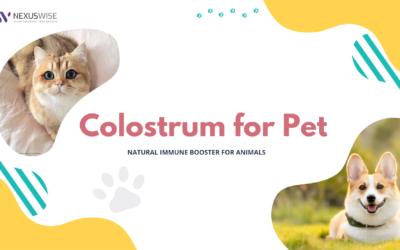The breath of life
Just breathe. Something we do every single moment of every single day without even thinking about it – Just breathe. Until we don’t. Pneumonia, asthma, lung cancer, cystic fibrosis, and a host of other illnesses can affect the respiratory system and impede our ability to breathe.
The respiratory system’s main job is to move fresh air into your body while removing waste gases. Your lungs are part of the respiratory system, a group of organs and tissues that work together to help you breathe. Every cell in your body needs oxygen in order to live and the air we breathe contains oxygen and other gases. Once in the lungs, oxygen is moved into the bloodstream and carried through your body. At each cell in your body, oxygen is exchanged for a waste gas called carbon dioxide. Your bloodstream then carries this waste gas back to the lungs where it is removed from the bloodstream and then exhaled. Your lungs and respiratory system automatically perform this vital process, called gas exchange.
The respiratory system performs other roles important to breathing as well such as bringing air to the proper body temperature and moisturizing it to the right humidity level; protecting the body from harmful substances, and supporting one’s sense of smell.
The structure of the lungs
The lungs are located in the chest, behind the rib cage on either side of the heart. They are roughly conical in shape with a rounded point at their apex and a flatter base where they meet the diaphragm. Although they are a pair, the left lung has a slightly smaller weight and capacity than the right. When air enters the nose or mouth, it travels down the trachea or windpipe. After this, it reaches the carina where the windpipe splits into two, creating two mainstem bronchi. One leads to the left lung and the other to the right lung.
From there, the pipe-like bronchi split again into smaller bronchi and then even smaller bronchioles. This ever-decreasing pipework eventually terminates in the alveoli, which are little air sac endings. Here, gas exchange occurs.
Surfactant in the lungs
Special cells in the alveoli produce a compound composed of lipids, proteins, wand carbohydrates known as pulmonary surfactant which has both hydrophilic and hydrophobic regions. Hydrophilic regions are attracted to water, and hydrophobic regions are repelled by water. Pulmonary surfactant serves a number of vital functions such as allowing for better breathing efficiency and preventing the alveoli from collapsing on themselves. Each alveolus is like a plastic bag that is wet inside. If there were no surfactant, the bag would collapse in on itself, and the internal sides would stick together.
What COVID-19 does to the lungs
Like other respiratory illnesses, COVID-19, the disease caused by the new coronavirus, can cause lasting lung damage from pneumonia, acute respiratory distress syndrome, or ARDS, and Sepsis, to name but a few. The Lancet’s EBioMedicine journal published a study of the lungs of 41 people who died from COVID-19 in Italy which revealed extensive damage, persistent distortion of the normal organ structure, scarring of respiratory tissue, and massive blood clotting of the arteries and veins, which may help explain why it takes some people months to recover from fatigue and shortness of breath.
Panagis Galiatsatos, M.D., M.H.S., an expert on lung disease at Johns Hopkins Bayview Medical Center, explains how the pneumonia that COVID-19 causes tends to take hold in both lungs. Air sacs in the lungs fill with fluid, limiting their ability to take in oxygen and causing shortness of breath, cough and other symptoms. While most people recover from pneumonia without any lasting lung damage, the pneumonia associated with COVID-19 may be severe taking months to improve. Furthermore, as COVID-19 pneumonia progresses, more of the air sacs become filled with fluid leaking from the tiny blood vessels in the lungs. Eventually, shortness of breath sets in, and can lead to acute respiratory distress syndrome (ARDS), a form of lung failure, requiring ventilator support to help circulate oxygen in the body. People who survive ARDS and recover from COVID-19 may have lasting pulmonary scarring.
Another possible complication of a severe case of COVID-19 is sepsis. “Lungs, heart and other body systems work together like instruments in an orchestra,” Galiatsatos says. “In sepsis, the cooperation between the organs falls apart. Entire organ systems can start to shut down, one after another, including the lungs and heart.”
Lung health
The American Lung Association provides several tips to protect the lungs, the first and foremost of which is to stop smoking or not smoke in the first place. Cigarette smoke can narrow the air passages and make breathing more difficult. It causes chronic inflammation, or swelling in the lung, which can lead to chronic bronchitis. Over time cigarette smoke destroys lung tissue and may trigger changes that grow into cancer. The American College of Chest Physicians state that the most frequently diagnosed cancer is lung cancer (11.6%) with lung cancer mortality projected to reach 2.45 million worldwide by 2030, a 39% increase since 2018.
Radon, a colorless, tasteless and odorless gas that causes lung cancer, can reside at dangerous levels inside homes, schools and other buildings. Exposure to radon is the second leading cause of lung cancer in the United States, after smoking. Radon-related lung cancers are responsible for an estimated 21,000 deaths annually in the United States. Radon poisoning is symptomless, meaning that it gives no meaningful indication of exposure. Unfortunately, no test is currently available that can diagnose or identify prior exposure to radon.
Getting regular exercise makes your heart beat faster and your lungs work harder. Your body needs more oxygen to fuel your muscles and your lungs step up their activity to deliver that oxygen while expelling additional carbon dioxide. Creating strong, healthy lungs through exercise ensures that even if you do develop lung disease down the road, it can help to slow the progression.
Research suggests people who eat more fiber have lungs that work better than those who don’t. Fiber-rich foods include whole-wheat spaghetti, baked beans, chia seeds, quinoa, pears, and broccoli. Surprisingly, research has found a connection between regular coffee and healthier lungs. This could be due to the caffeine, which is anti-inflammatory, and polyphenols, which are antioxidant and also anti-inflammatory. Whole grains like brown rice, whole-wheat bread, whole-wheat pasta, oats, quinoa, and barley are high in fiber, which has antioxidant and anti-inflammatory qualities, and are full of vitamin E, selenium, and essential fatty acids, which are good for lung health. Red and blue fruits like blueberries and strawberries are rich in a flavonoid called anthocyanin, which is a strong antioxidant. Studies have shown that this pigment can slow down your lungs’ natural decline as you age. Spinach and other leafy greens could lower your chance of getting lung cancer because they are high in carotenoids, which are antioxidant. Tomatoes are the richest source of lycopene, which is linked to lung health. Eating tomatoes and tomato products like tomato juice can improve airway inflammation if you have asthma and may lower your chance of death if you have chronic obstructive pulmonary disease (COPD).
At the end of the day, breathe life into your lungs because they are the only pair that you get.


